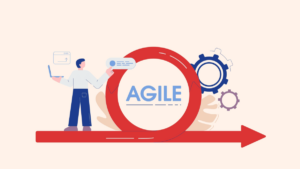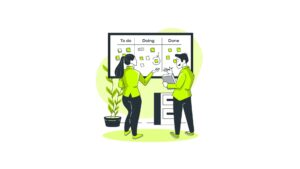Accept Cookies & Privacy Policy?
We use cookies to ensure that we give you the best experience on our website. If you continue to use this site we will assume that you accept and understand our Privacy Policy, and our Terms of Service.
Applications that are specially created and built to make use of cloud computing platforms are known as “cloud-native” applications. These applications are developed utilizing a set of guidelines and tools that support scalability, resilience, and agility in a cloud setting.
Cloud-native application testing refers to testing practices and methodologies that are specifically created for cloud-native architecture-based apps. Cloud-native apps are often built with microservices, containers, and serverless computing, and are orchestrated by platforms such as Kubernetes. These applications are very scalable and resilient, and they can fully utilize cloud computing resources.
Cloud native application platform
Testing services for cloud-native applications enable effective development and automate every aspect of management across hybrid, public, and private clouds. Being cloud-native has a lot of additional advantages.
Agility and Faster Time-to-Market
Rapid development, deployment, and iteration are made possible by cloud-native applications. Developers can swiftly bundle and deliver new features or bug fixes with the help of infrastructure automation and containerization. Businesses may react to market changes more quickly, publish updates more frequently, and gain a competitive advantage thanks to this agility.
Cost Efficiency
Cloud-native applications optimize resource utilization by scaling up or down in response to actual demand. This elastic scaling enables organizations to allocate resources as needed, eliminating the excessive expenditures of over-provisioning. Furthermore, cloud-native architectures make use of cloud provider services, which reduces the requirement for on-premises infrastructure investments.
Better management
This is another added benefit of cloud-native application testing, as it helps to make infrastructure management much more effortless. Businesses need not further worry about factors like allocating storage, configuring networking or provisioning cloud instances since serverless platforms like AWS Lambda and Azure functions are implemented.
Collaboration and Communication
Cloud-native testing promotes teamwork and communication among development, testing, and operations teams. Effective communication channels and collaborative tools aid in the timely sharing of test plans and results, as well as the resolution of concerns.
Automation and Continuous Testing
Cloud-native testing focuses on test automation and integration into the continuous integration and delivery (CI/CD) pipeline. Automated tests allow for frequent and rapid testing, ensuring that every change is thoroughly tested before it is deployed to production.
Applications with higher levels of Resilience and Fault Tolerance
Cloud-native applications are built to be resilient in the face of failures. Because of its distributed architecture, if one service fails, the rest of the application can continue to work, offering a higher level of fault tolerance and lowering the impact of failures on the overall system.
Scalability
Another great benefit of cloud-native application testing is its scalability. Cloud-native applications are built to scale easily. Applications can dynamically distribute resources based on demand by leveraging technologies such as containerization and orchestration platforms such as Kubernetes. This enables applications to effectively handle varying workloads, providing optimal performance and responsiveness.
Auto-Provisioning
Another added benefit of cloud-native application testing is that it supports auto-provisioning. When the apps are in need of some resources, they automatically self-service via programmatic provisioning. This enables applications to run smoothly, without any requirement of manual intervention. Cloud-native application platform also furnishes renewed runtime surroundings for operating the applications securely and at scale.
Higher availability and Disaster Recovery
Cloud-native applications use built-in techniques like load balancing and auto-scaling to provide high availability and handle growing traffic. Furthermore, cloud providers offer sophisticated disaster recovery options, allowing organizations to copy and back up data across many regions, assuring business continuity and lowering the chance of data loss.
Flexibility and Portability
Cloud-native applications are platform-independent. They can be implemented on a variety of cloud providers or even on-premises. This flexibility enables organizations to select the cloud provider that best suits their needs while also allowing them to swap providers if necessary.
Currently, the tech world is booming with cloud-native applications. As most enterprises are moving towards the cloud as fast as possible, considering the vast benefits it provides. As cloud technology successfully presents itself with the added ability to be agile and scale at demand.
Cloud-native testing ensures that cloud-native applications are of the highest quality, operate optimally, and scale efficiently. It enables organizations to develop dependable and robust applications that capitalize on the benefits of cloud computing while minimizing risks and guaranteeing a great end-user experience.
We focus and design our testing approach based on the following Cloud-native principles:
1. Microservices
2. Containerization & Orchestration
3. Continuous Integration & Continuous Delivery
4. Automation
5. DevOps
We at Thought Frameworks combine various testing methodologies and practices to ensure comprehensive validation of the application’s functionality, scalability, performance, resilience, and security.
1. Understand Cloud-native Architecture
2. Define Testing Objectives
3. Determine the test types and levels of testing required
4. Test Environment Setup
5. Test Data Management
6. Test Automation
7. Continuous Integration and Delivery (CI/CD)
8. Monitoring and Observability
9. Collaboration and Communication
10. Continuous Improvement
11. Chaos Engineering
Following are the 3 key pillars of Cloud-native application testing which Thought Frameworks focuses on and includes as a part of the Testing Strategy are
By focusing on the above important 3 pillars we ensure that the Cloud-native applications are delivered with high performance, availability, and data protection while leveraging the advantages of cloud computing.
Analyze how the feature is deployed and the key distributed elements to the system
Cross-examine the availability of feature dependencies
Identify the feature recovery process.
Kubernetes can perform rolling restarts but how do we gracefully shutdown and release client threads
Cloud Native Application Testing has numerous points of failure due to a large number of moving components, which are loosely coupled. Failures can occur for a number of reasons and can impact the business in the following ways –
With the introduction of tools to orchestrate applications in different settings, the possibility is offered to automate the execution of our native cloud native test strategy within these pipelines.
The quality assurance team, developers and product owners work collaboratively to contribute to ensuring that the best value is achieved. The Cloud Native Test Quality Assurance Charter and the principles of chaos can help to ensure that production is reliable.
Adding value to Cloud Native Application Testing requirements:

I’ve been in the Agile trenches for years now—coaching teams, facilitating sprints, navigating the choppy waters of transformations that promised the moon but barely delivered a sprint review. If there’s one thing I’ve learned, it’s that Agile is like water—it evolves, it adapts, and sometimes, it drowns you if you’re not prepared.

So picture this: You’re the air traffic controller of a chaotic airport where the planes (developers) don’t always listen, the passengers (stakeholders) want to change destinations mid-flight, and the weather (unforeseen blockers) is always unpredictable.

Imagine a world where testing is no longer a bottleneck. No more endless cycles of manual effort, no more missed defects due to human fatigue, and no more panic at the eleventh hour before a major ERP rollout.

Imagine a world where testing is no longer a bottleneck. No more endless cycles of manual effort, no more missed defects due to human fatigue, and no more panic at the eleventh hour before a major ERP rollout.

Let’s talk about GenAI and testing in 2025—the wild west of technology where machines are not just smart, but scary smart. GenAI (that’s Generative AI for the uninitiated) is running the show everywhere. It’s writing poetry, designing ads, debugging code, and probably plotting to take over my job as I write this blog.

Ah, 2024—you’ve been a year, haven’t you? For us at Thought Frameworks, this year wasn’t just about running the usual QA/QE playbook. Nope, we went full throttle into the future—tinkering, testing, and transforming everything from ERP systems to the ever-evolving world of SAP, GenAI, and security testing.
Accept Cookies & Privacy Policy?
We use cookies to ensure that we give you the best experience on our website. If you continue to use this site we will assume that you accept and understand our Privacy Policy, and our Terms of Service.
| Cookie | Duration | Description |
|---|---|---|
| cookielawinfo-checkbox-analytics | 11 months | This cookie is set by GDPR Cookie Consent plugin. The cookie is used to store the user consent for the cookies in the category "Analytics". |
| cookielawinfo-checkbox-functional | 11 months | The cookie is set by GDPR cookie consent to record the user consent for the cookies in the category "Functional". |
| cookielawinfo-checkbox-necessary | 11 months | This cookie is set by GDPR Cookie Consent plugin. The cookies is used to store the user consent for the cookies in the category "Necessary". |
| cookielawinfo-checkbox-others | 11 months | This cookie is set by GDPR Cookie Consent plugin. The cookie is used to store the user consent for the cookies in the category "Other. |
| cookielawinfo-checkbox-performance | 11 months | This cookie is set by GDPR Cookie Consent plugin. The cookie is used to store the user consent for the cookies in the category "Performance". |
| viewed_cookie_policy | 11 months | The cookie is set by the GDPR Cookie Consent plugin and is used to store whether or not user has consented to the use of cookies. It does not store any personal data. |
Ready for a Quality Software?
Let’s Dig Deep Into Your Thought!